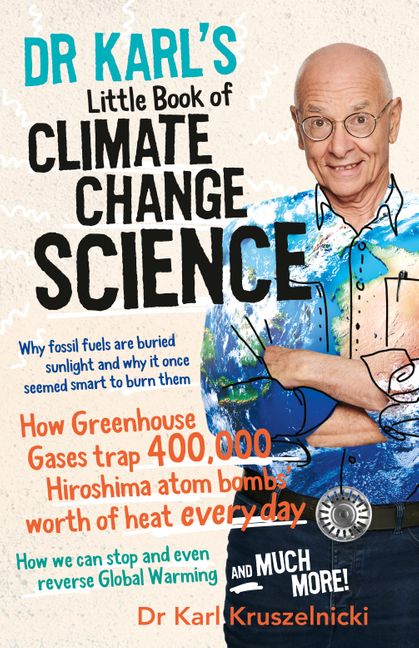Report on the Role of Political Systems in Achieving Global Climate Goals
This report analyzes the critical role of different political systems, particularly autocratic states, in the global effort to combat climate change and achieve the Sustainable Development Goals (SDGs), with a primary focus on SDG 13 (Climate Action).
The Influence of Autocratic Nations on SDG 13 (Climate Action)
A substantial majority of global greenhouse gas emissions originate from non-democratic nations, placing their policy decisions at the forefront of international climate negotiations. The actions of these states, many of which are also major suppliers of oil and gas, are crucial to preventing catastrophic climate breakdown and realizing the objectives of the Paris Agreement.
State-Owned Enterprises and Fossil Fuel Dependency
The global energy landscape is dominated by state-owned enterprises (SOEs), which present a significant challenge to achieving SDG 7 (Affordable and Clean Energy) and SDG 12 (Responsible Consumption and Production).
- Of the top 20 companies with the highest carbon output, 16 are state-owned.
- In 2023, these SOEs were responsible for 52% of global emissions.
- Key entities such as Saudi Aramco, China’s CHN Energy, and the National Iranian Oil Company are controlled by autocratic governments, creating powerful vested interests that conflict with global decarbonization efforts.
- Former UN climate chief Christiana Figueres notes that these SOEs are “keeping the world hooked on fossil fuels, with no plans to slow production,” directly undermining progress on SDG 13.
Governance Models and Their Effectiveness in Climate Policy
The relationship between a nation’s political system and its capacity for effective climate action is complex, with both autocratic and democratic models presenting distinct advantages and disadvantages.
The Autocratic Approach: Centralized Power vs. Lack of Transparency
Authoritarian states possess the ability to enact sweeping policy changes by decree, which can accelerate environmental progress.
- Potential for Rapid Transition: Political scholar Francis Fukuyama suggests that an authoritarian state, free from the influence of entrenched interest groups, can more easily mandate a shift to low-carbon technology. China’s emergence as the world’s largest producer of renewable energy technology serves as a primary example of this potential, advancing aspects of SDG 7.
- Challenges to Accountability: This centralized power is often accompanied by a lack of transparency and public accountability, which are core tenets of SDG 16 (Peace, Justice and Strong Institutions). The suppression of popular protest removes a key driver for environmental action, and information asymmetries can prevent leaders from receiving accurate reports on policy implementation.
The Democratic Approach: Public Pressure vs. Political Instability
Democracies benefit from public pressure and activism, which have historically driven significant environmental legislation. However, they are not immune to failure.
- Influence of Civil Society: Mass mobilization, such as the first Earth Day in 1970, has proven effective in establishing environmental protections. This aligns with the participatory principles of SDG 16.
- Systemic Hypocrisy: Many democracies, including the US, Canada, Australia, and the UK, continue to support fossil fuel expansion despite climate pledges. Development economist Jayati Ghosh argues that in democracies, “capital can exert much more pressure than any other stakeholder,” leading to policy outcomes that contradict stated climate goals.
Research indicates that there is no conclusive evidence that one political system is inherently better equipped to address the climate crisis. Both models are currently failing to take the minimum action required to avert catastrophe.
Strategies for Global Cooperation and Progress on the SDGs
Addressing the climate crisis requires a multilateral approach that transcends political systems, leveraging international partnerships as envisioned in SDG 17 (Partnerships for the Goals).
The Imperative of Multilateral Diplomacy
Effective climate negotiation necessitates the inclusion of all nations, regardless of their political structure. Ana Toni, chief executive of the Cop30 climate summit, emphasizes, “Climate is a topic that we can only solve in a multilateral way.”
- Diplomatic Engagement: Strategies such as France’s “360 degree diplomacy” before the Paris summit and Brazil’s appointment of 30 special envoys for Cop30 exemplify the cooperative approach needed to build consensus.
- Personal Diplomacy: The long-standing rapport between US envoy John Kerry and his Chinese counterpart, Xie Zhenhua, demonstrates that personal relationships can foster cooperation even between geopolitical rivals, reinforcing the importance of SDG 17.
Mechanisms for External Influence and Accountability
The international community can employ several tools to encourage climate action and enhance transparency.
- Economic Measures: Carbon Border Adjustment Mechanisms (CBAMs), proposed by the EU and others, aim to apply tariffs to high-carbon imports, creating an economic incentive for decarbonization that supports SDG 12.
- Promoting Green Growth: Framing the energy transition as an opportunity for economic development, in line with SDG 8 (Decent Work and Economic Growth), can create common ground. As noted by economist Vera Songwe, it is essential “to demonstrate that green growth is possible.”
- Enhancing Transparency: Pushing for greater disclosure from opaque, state-owned entities is critical for holding major emitters accountable and ensuring the integrity of global climate efforts under SDG 16.
1. Which SDGs are addressed or connected to the issues highlighted in the article?
-
SDG 13: Climate Action
The article is fundamentally about the “climate crisis,” focusing on the urgent need to reduce “greenhouse gas emissions” and limit “global heating.” It discusses international efforts like the “Paris agreement” and “UN climate summits,” which are central to SDG 13’s goal of taking urgent action to combat climate change and its impacts.
-
SDG 7: Affordable and Clean Energy
The article contrasts the reliance on “fossil fuels” with the shift towards “low-carbon technology.” It specifically mentions China’s role as the “world’s biggest producer of renewable energy” and its exports of “electric vehicles, solar panels,” directly connecting to the goal of ensuring access to affordable, reliable, sustainable, and modern energy.
-
SDG 16: Peace, Justice and Strong Institutions
A core theme is the comparison between “democracies” and “autocracies” in tackling climate change. The article discusses issues of government “accountability,” “transparency,” the suppression of “popular protest” and “activism,” and the need for “effective democratic participation.” This relates to building effective, accountable, and inclusive institutions at all levels.
-
SDG 17: Partnerships for the Goals
The article stresses that the climate crisis can “only solve in a multilateral way.” It highlights the importance of “global climate talks,” diplomatic efforts between nations (like the US and China), and cooperative strategies like France’s “360 degree diplomacy” and Brazil’s appointment of “30 special envoys,” all of which are examples of strengthening global partnerships for sustainable development.
-
SDG 12: Responsible Consumption and Production
The article points to the “carbon majors,” many of which are “state-owned,” for their massive “carbon output” and having “no plans to slow production.” This directly addresses unsustainable patterns of production. The mention of policies like “carbon border adjustment mechanisms (CBAMs)” also relates to promoting responsible production by penalizing high-carbon imports.
2. What specific targets under those SDGs can be identified based on the article’s content?
-
SDG 13: Climate Action
- Target 13.2: Integrate climate change measures into national policies, strategies and planning. The article explicitly discusses China’s forthcoming “new national plan on emissions” and refers to countries’ “Paris agreement commitments,” which are national-level climate plans.
- Target 13.a: Implement the commitment undertaken by developed-country parties to the United Nations Framework Convention on Climate Change to a goal of mobilizing jointly $100 billion annually by 2020 from all sources to address the needs of developing countries in the context of meaningful mitigation actions and transparency on implementation and support countries in mobilizing climate finance from a wide variety of sources. The article’s focus on “global climate talks,” the “Paris agreement,” and the role of UN summits directly involves the framework of this target.
-
SDG 7: Affordable and Clean Energy
- Target 7.2: By 2030, increase substantially the share of renewable energy in the global energy mix. The article highlights China’s status as the “biggest producer of renewable energy” and its “huge investment in renewables” as a key development in the global energy landscape.
-
SDG 16: Peace, Justice and Strong Institutions
- Target 16.6: Develop effective, accountable and transparent institutions at all levels. The article contrasts the “inscrutable” nature of autocracies with the ideal of transparency, noting that in authoritarian states, leaders “may not always receive accurate reports” and companies face “few requirements to disclose their finances or activities.”
- Target 16.7: Ensure responsive, inclusive, participatory and representative decision-making at all levels. The article emphasizes the power of “popular protest,” “mass mobilisation,” and “effective democratic participation” in achieving environmental action, while noting that in some countries, activism is “perilous, and can be fatal.”
- Target 16.10: Ensure public access to information and protect fundamental freedoms, in accordance with national legislation and international agreements. The lack of transparency in autocracies, where officials are “tight-lipped” about national plans, and the “constant fear of arrest or repression” for activists directly relate to this target.
-
SDG 17: Partnerships for the Goals
- Target 17.16: Enhance the Global Partnership for Sustainable Development, complemented by multi-stakeholder partnerships that mobilize and share knowledge, expertise, technology and financial resources, to support the achievement of the sustainable development goals in all countries, in particular developing countries. The article’s entire premise is built on the need for a “multilateral way” to solve the climate crisis, involving “global climate talks” and diplomatic relationships between countries with different political systems.
3. Are there any indicators mentioned or implied in the article that can be used to measure progress towards the identified targets?
-
For SDG 13 (Climate Action)
- Total greenhouse gas emissions: The article is centered on “greenhouse gas emissions” and “carbon output.” It provides a specific figure that state-owned “carbon majors” were “responsible for 52% of global emissions in 2023.” This directly corresponds to Indicator 13.2.2 (Total greenhouse gas emissions per year).
-
For SDG 7 (Affordable and Clean Energy)
- Share of renewable energy: Progress is measured by the growth of renewables. The article implies this by citing China as the “world’s biggest producer of renewable energy” and referencing its “huge investment in renewables.” This relates to Indicator 7.2.1 (Renewable energy share in the total final energy consumption).
-
For SDG 16 (Peace, Justice and Strong Institutions)
- Level of transparency and accountability: The article repeatedly uses “transparency, or the lack of it” as a key metric for comparing political systems. It notes that state-owned entities in autocracies have “few requirements to disclose their finances or activities,” implying that disclosure requirements are a key indicator of institutional strength.
- Protection of fundamental freedoms: The article implies this as an indicator by describing how activism in some countries is met with “constant fear of arrest or repression,” which “severely limits the space for activism.” This relates to Indicator 16.10.1 (Number of verified cases of killing, kidnapping, enforced disappearance, arbitrary detention and torture of journalists, associated media personnel, trade unionists and human rights advocates).
-
For SDG 12 (Responsible Consumption and Production)
- Fossil fuel production levels: The article implies that a key indicator of responsibility is the reduction of fossil fuel extraction, noting that the “carbon majors” have “no plans to slow production” and that some democracies are “actively pursuing fossil fuel expansion.” This relates to Indicator 12.c.1 (Amount of fossil-fuel subsidies per unit of GDP).
4. Table of SDGs, Targets, and Indicators
| SDGs | Targets | Indicators |
|---|---|---|
| SDG 13: Climate Action | Target 13.2: Integrate climate change measures into national policies, strategies and planning. | Total greenhouse gas emissions (e.g., “52% of global emissions” from carbon majors). Existence of national climate plans (e.g., China’s “new national plan on emissions”). |
| SDG 7: Affordable and Clean Energy | Target 7.2: Increase substantially the share of renewable energy in the global energy mix. | Share of renewable energy in the energy mix (e.g., China as the “biggest producer of renewable energy”). Investment in and export of low-carbon technology (e.g., “electric vehicles, solar panels”). |
| SDG 16: Peace, Justice and Strong Institutions | Target 16.6: Develop effective, accountable and transparent institutions.
Target 16.7: Ensure responsive, inclusive, participatory and representative decision-making. Target 16.10: Ensure public access to information and protect fundamental freedoms. |
Level of institutional transparency (e.g., disclosure requirements for state-owned companies). Space for civil society and activism (e.g., freedom from “arrest or repression”). Public access to government information (e.g., whether national climate plans are public or “tight-lipped”). |
| SDG 17: Partnerships for the Goals | Target 17.16: Enhance the Global Partnership for Sustainable Development. | Engagement in multilateral processes (e.g., participation in “UN climate summits”). Establishment of diplomatic and cooperative mechanisms (e.g., “360 degree diplomacy,” special envoys). |
| SDG 12: Responsible Consumption and Production | (Implied) Phase-out of inefficient fossil-fuel subsidies that encourage wasteful consumption. (Related to Target 12.c) | Fossil fuel production levels (e.g., companies having “no plans to slow production”). Implementation of policies to influence production (e.g., “carbon border adjustment mechanisms”). |
Source: theguardian.com






